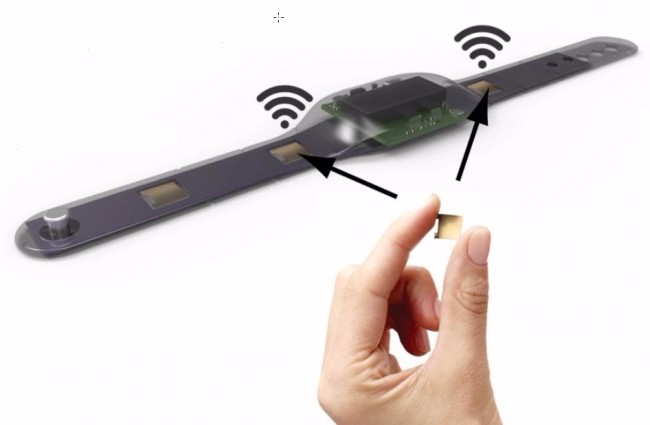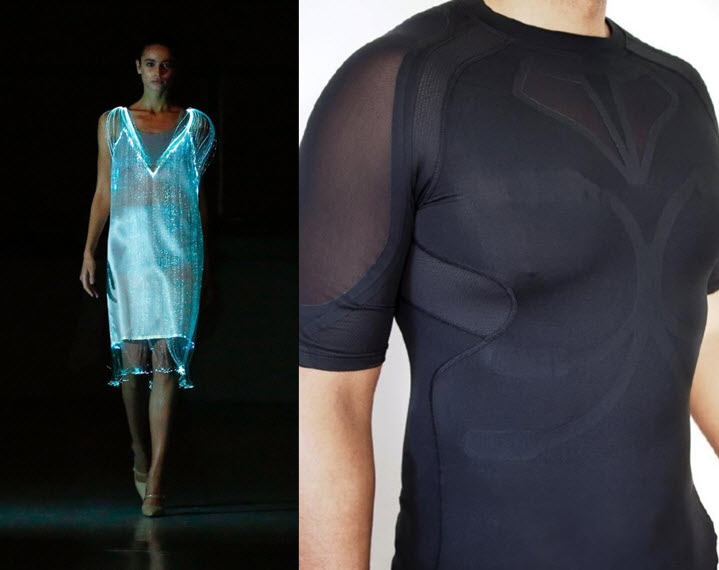Printed Electronics 2015 (Santa Clara, CA, November 17-20) offered several sessions organized around the overall topic of Wearable Technology. The sessions and presentations were wide ranging in their scope and covered technologies including stretchable and textile electronics, flexible sensors, advanced microcontrollers for wearables, thin and flexible energy storage, wireless power, manufacturing for wearable electronics, smart clothing and skin patches, as well as user interface technology that enables wearable technology.
On the wearable technology application side, there were sessions on wearable technology and fashion, applications of head mounted displays, and wearable technology in healthcare. With such a wide range of wearable technologies and applications in play at the conference it was clear that there is a great deal of technical and business interest in the wearable segment but it was as yet unclear whether wearables will emerge as a major stand-alone segment.
There was a continuing emphasis on smartwatches and fitness bands. For example, Francois Jeanneau, CEO Novasentis, presented on the firm’s film-based electro-mechanical polymer (EMP) haptic actuators. Novasentis believes its EMP actuators will enable more appealing haptic notifications in future wearables than the mechanical actuators, such as vibration motors and the Apple Watch “Taptic Engine.” Novasentis acknowledged that Apple is “pushing the boundaries” with its Taptic Engine, but the firm maintains that most users still have trouble differentiating among various haptic notifications. Novasentis envisions its EMP haptic actuators being embedded in a wrist band at multiple locations with each actuated independently (see illustration below).
 Source: Novasentis
Source: Novasentis
Novasentis has a goal of providing richer, more diverse notifications. The firm also points to the more compact nature of their planar EMP haptic actuators and to the fact that their actuators can be operated over a wide range of frequencies to create a wide range of haptic effects as well as sound.
A second theme in the Printed Electronics 2015 Wearables track was Fashion. Presentations were delivered by Fashion Innovation Agency, Ortiz Industry, and Architects of Intelligent Applications. Examples of wearable technology presented by Matthew Drinkwater of Fashion Innovation Agency (FIA) and by Clare Ortiz of Ortiz Industry are shown in the photos below.
 Source: Fashion Innovation Agency Source: Ortiz Industry
Source: Fashion Innovation Agency Source: Ortiz Industry
The LED-illuminated fiber optic dress (above left) presented by FIA resulted in press comments including one from Forbes stating: “The first example of truly beautiful wearable technology.” The garment in the photo (above right) incorporates stretchable sensors that measure heart rate, oxygen saturation, body temperature, and overall activity levels. The garment is fabricated using conductive silver paste that yields a garment that is stretchable and washable to more than 100 cycles.
In addition to the fashion application presentations, several sessions were devoted to a wide range of technologies that specifically enable fashion applications of wearable technology including stretchable and textile electronics, flexible sensors, thin and flexible energy storage, wireless power, manufacturing for wearable electronics, and smart clothing. Based on the coverage and interest in wearable technology at Printed Electronics 2015 extending from the underlying technology and manufacturing aspects and on to fashion applications, healthcare products and beyond, I anticipate continuing interest and market growth in wearable technology going forward. – Phil Wright

